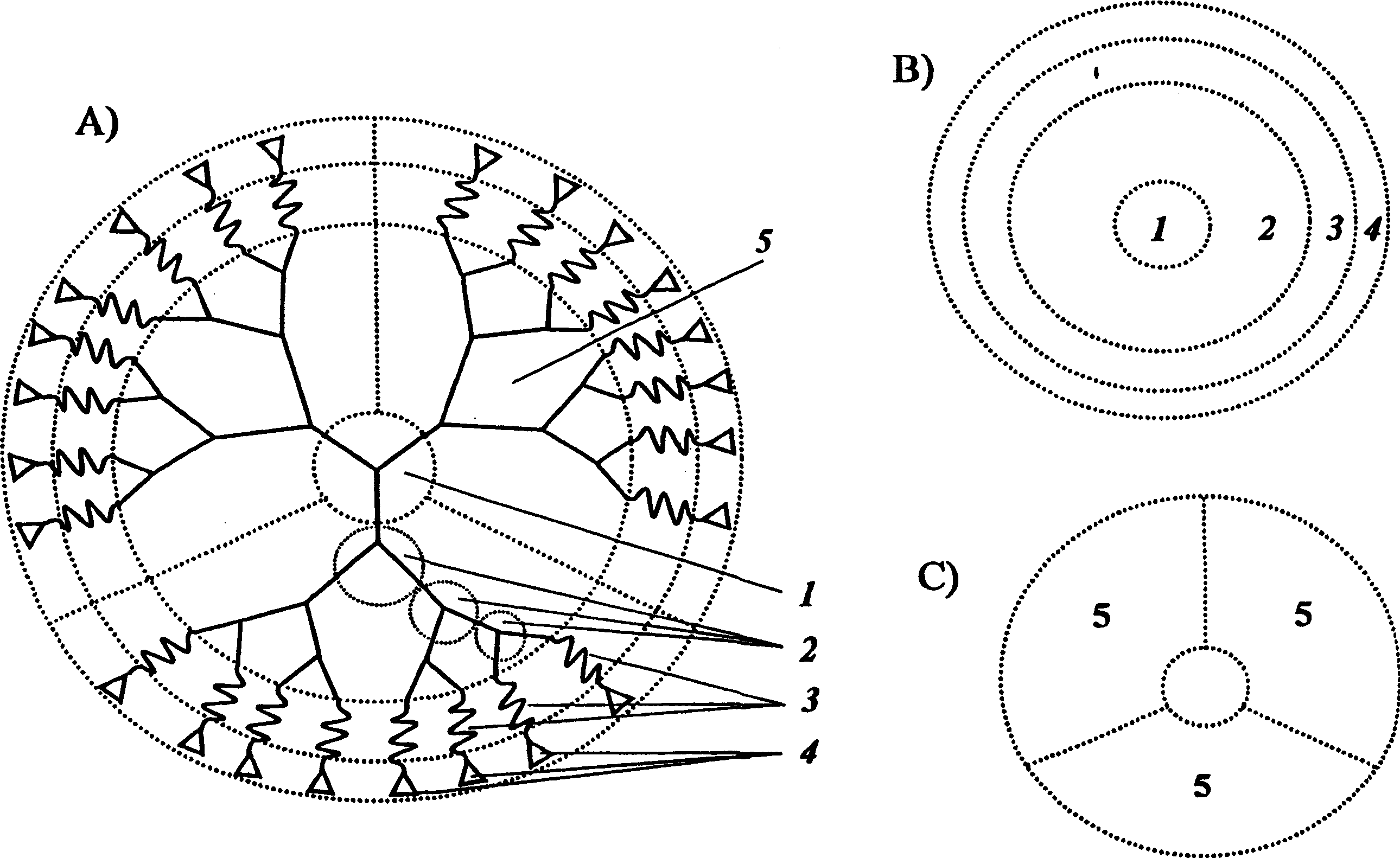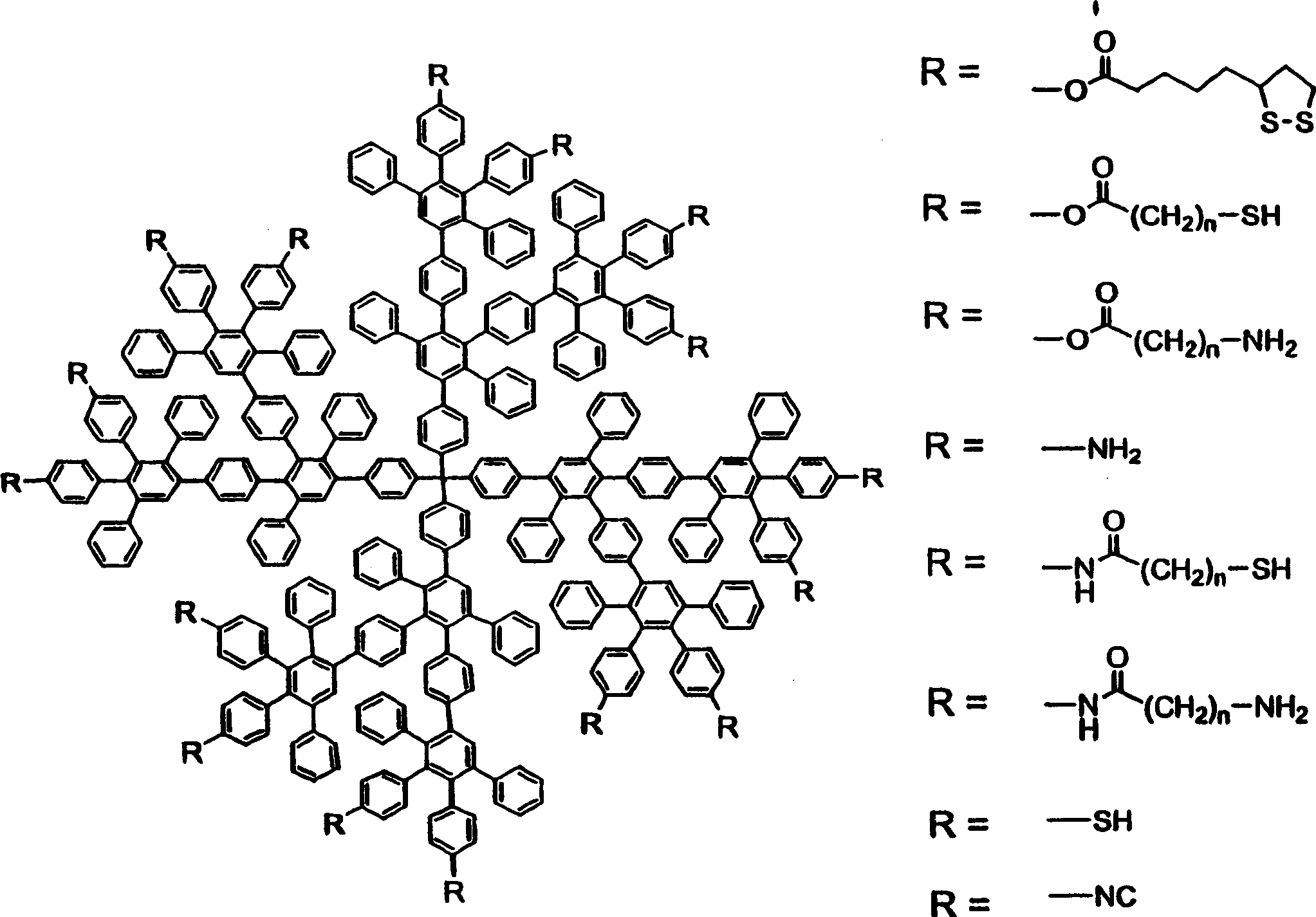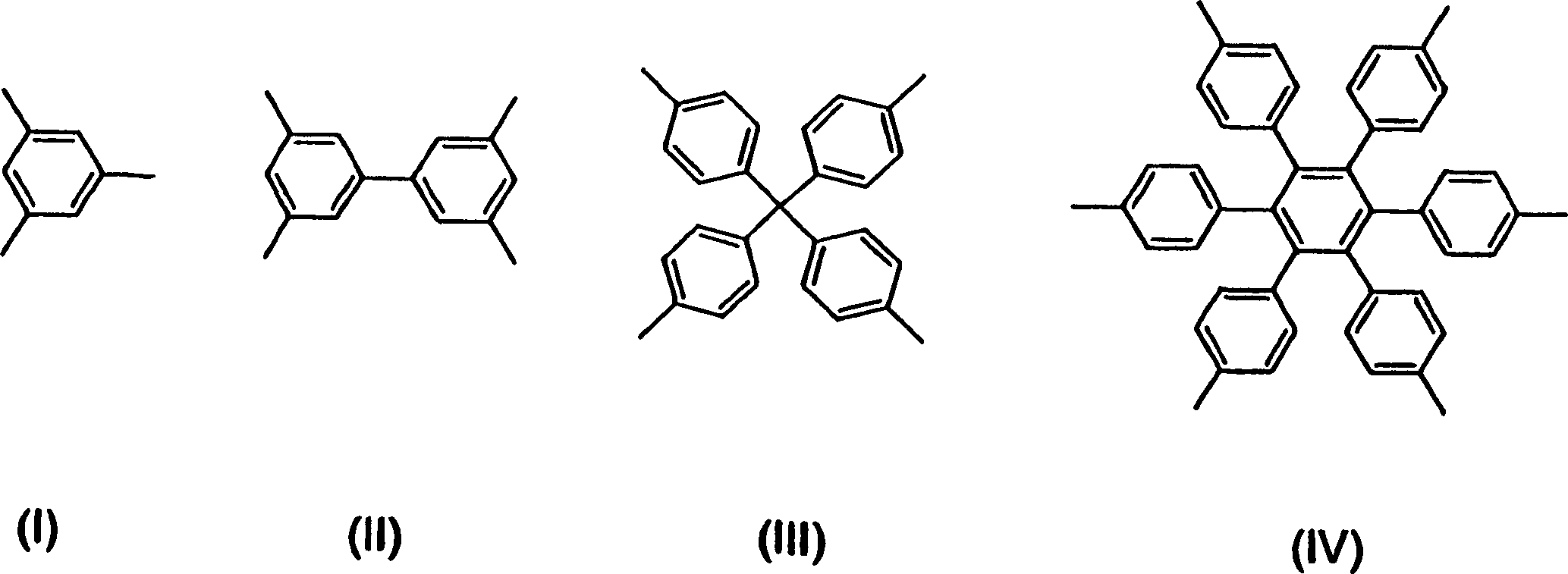Chemical sensor made of nano particle/dendrite composite material
A chemical sensor and nanoparticle technology, applied in the field of chemical sensors, can solve problems such as difficult identification, and achieve the effect of improving sensitivity and response time
- Summary
- Abstract
- Description
- Claims
- Application Information
AI Technical Summary
Problems solved by technology
Method used
Image
Examples
Embodiment Construction
[0109] figure 1 A shows the general structure of dendrites that can be used to shape the chemical sensors of the present invention. The center of the structure is center 1 (or focus). figure 1 In the case of A, there are three branches in the center (such as 1, 3, 5 substituted benzene rings). However, the center can generally also have a different number of branches. Preferably the center has two arms (eg 1,4 substituted benzene ring or alkylenediamine). More preferably the center has three wings (eg 1,3,5 substituted benzene ring). Even more preferably the center has four wings (eg carbon or silicon atoms). Each wing in the center is connected to the first "shell" of repeating unit 2, each splitting into two new wings. The atoms of the repeating unit branches may be carbon atoms or heteroatoms such as nitrogen. figure 1 The example shown in A has a total of three repeating unit shells from the center to the outside of the structure. The dendrite structure shown is the...
PUM
 Login to View More
Login to View More Abstract
Description
Claims
Application Information
 Login to View More
Login to View More - R&D
- Intellectual Property
- Life Sciences
- Materials
- Tech Scout
- Unparalleled Data Quality
- Higher Quality Content
- 60% Fewer Hallucinations
Browse by: Latest US Patents, China's latest patents, Technical Efficacy Thesaurus, Application Domain, Technology Topic, Popular Technical Reports.
© 2025 PatSnap. All rights reserved.Legal|Privacy policy|Modern Slavery Act Transparency Statement|Sitemap|About US| Contact US: help@patsnap.com



